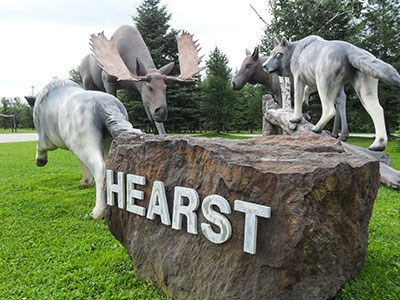The Town of Hearst and Constance Lake First Nation are collaborating on a unique partnership that could see the two communities benefit from mining in the region.
In March, the two communities embarked on the joint development of a mining readiness strategy, which is designed to boost economic development and growth in the region and improve local skills and service delivery geared toward attracting mining companies and investment.
Sylvie Fontaine, general manager of the Hearst Economic Development Corporation, said the idea was modelled on a similar development in the North where communities began preparing for potential mining activity from the Ring of Fire.
“In our case, it’s not the Ring of Fire, but it’s any mining activity that might start in the near future,” Fontaine said. “As you know, they’ve found some graphite, the purest graphite in the world, about 60 kilometres from Hearst and about 20 kilometres from Constance Lake.”
Dubbed the Albany Graphite Deposit, the hydrothermal graphite mineralization was discovered in 2011 by Zenyatta Ventures, which has since prepared a resource estimate indicating 25.1 million tonnes at an average grade of 3.89 per cent graphitic carbon containing 977,000 tonnes, and inferring 20.1 million tonnes at an average grade of 2.20 per cent, containing 441,000 tonnes.
Graphite is prized for its use in lithium-ion batteries, the renewable energy industry, electronic devices, and fuel cells.
The two-year mining strategy is currently in the first of three phases, which involves creating a baseline of information, such as the population, economy, environment, and infrastructure of the two communities.
Input is provided by a 20-member regional stakeholders committee, which includes representatives from Hearst, Constance Lake First Nation, the federal and provincial governments, Zenyatta Ventures, and local exploration companies.
Should Zenyatta’s graphite mine go ahead to production, Hearst and Constance Lake want to be ready, Fontaine said. She believes there could be jobs and business opportunities for local companies to provide services to the mining company.
“There are certain companies here that can provide for any mining companies, startup or maintenance; however, there are some that we can’t provide,” Fontaine said. “But the ones that we have, we want to make sure that they do take part in the construction or the running of the mining, and maybe other companies will move here and it can become a small cluster.”
The communities also want to ensure they have adequate infrastructure, such as housing, water, and roads, to handle an influx of new residents, she added.
Phase one of the strategy is expected to be complete this fall. Phase two will involve assessing opportunities for mine readiness and establishing key priority actions to integrate the region with the future mining economy.
Phase three will involve implementing the strategy and monitoring its progress.
Fontaine said Zenyatta has been holding public consultation sessions throughout the process, and is very open about progress on the project.
She’s hopeful that, by the time the mining readiness strategy is complete and underway, Zenyatta will have good news about mine startup.




